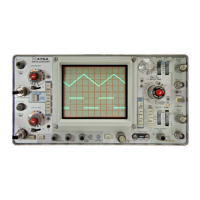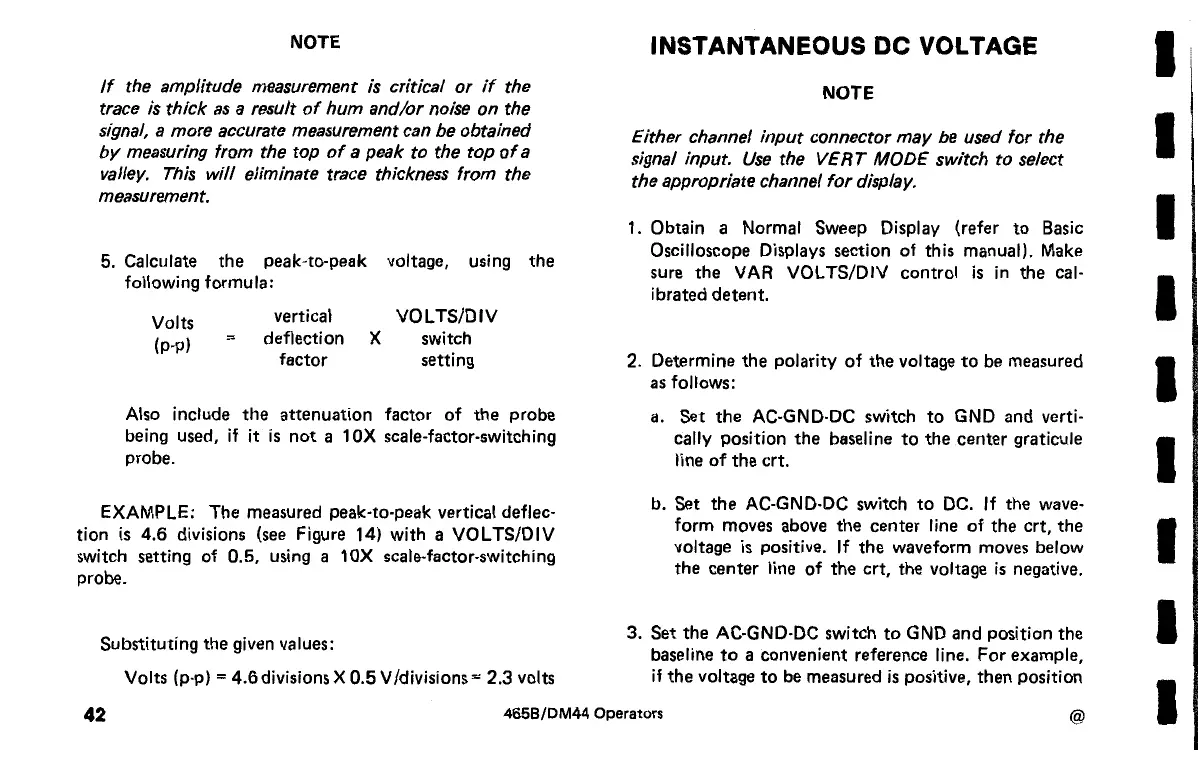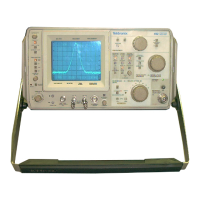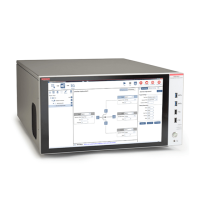NOTE
If
the amplitude measurement
is
critical or
if
the
trace
is
thick
as
a result
of
hum and/or noise on the
signal,
a more accurate measurement can be obtained
by
measuring
from
the top
of
a peak to the top
of
a
valley.
This
will eliminate trace thickness from the
measurement.
5.
Calculate
the
peak-to-peak
following formula:
Volts
(p-p)
vertical
deflection
factor
X
voltage, using
the
VOLTS/DIV
switch
setting
Also include
the
attenuation
factor
of
the
probe
being used, if it
is
not
a 1
OX
scale-factor-switching
probe.
EXAMPLE: The measured peak-to-peak vertical deflec-
tion
is
4.6
divisions (see Figure 14) with a VOL TS/DIV
switch setting
of
0.5, using a 1
OX
scale-factor-switching
probe.
Substituting
the
given values:
Volts (p-p) =
4.6
divisions X
0.5
V /divisions= 2.3 volts
INSTANTANEOUS DC VOLTAGE
NOTE
Either channel input connector
may
be used
for
the
signal input.
Use
the VERT
MODE
switch to select
the appropriate channel for display.
1. Obtain a Normal Sweep Display (refer
to
Basic
Oscilloscope Displays section
of
this manual). Make
sure
the
VAR VOLTS/DIV control
is
in
the
cal-
ibrated
detent.
2. Determine
the
polarity
of
the
voltage
to
be measured
as follows:
a.
Set
the
AC-GND-DC switch
to
GND and verti-
cally position
the
baseline
to
the
center
graticule
line
of
the
crt.
b.
Set
the
AC-GND-DC switch
to
DC. If
the
wave-
form moves above
the
center
line
of
the
crt,
the
voltage
is
positive. If
the
waveform moves below
the
center
line
of
the
crt,
the
voltage
is
negative.
3.
Set
the
AC-GND-DC switch
to
GND
and
position
the
baseline
to
a convenient reference line.
For
example,
if
the
voltage
to
be measured
is
positive,
then
position
42
465B/DM44
Operators
@
I
I
I
I
I
I
I
I
I

